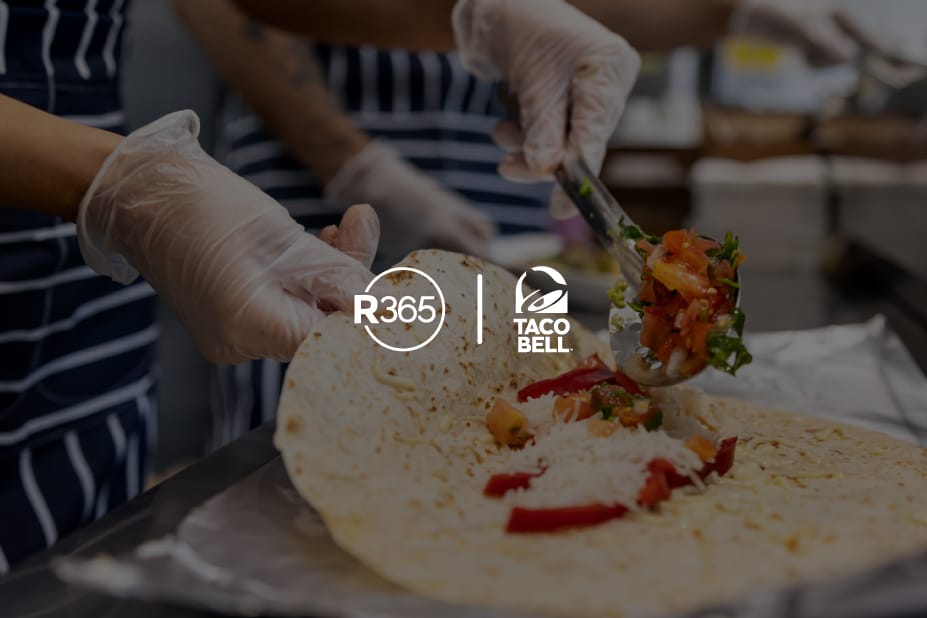
When making strategic adjustments to operating costs, many categorize restaurant labor a variable expense, because it fluctuates. But taking a closer look at your labor by breaking it down into fixed and variable labor costs can provide better insight into your labor allocation, so you can choose the best strategy for your restaurant.
What determines labor cost?
Labor cost is primarily affected by two factors: your restaurant’s labor hours, and customer demand. Some other factors, like wage laws, and the competitiveness of your local labor market, can also have an effect on labor cost. But most importantly, at any given meal period, you are looking to meet your target ratio of how many employees are working and how busy you are.
Generally, in addition to measuring labor cost, restaurant operators also look at the cost of labor as a percentage of sales. This number can give you a bird’s-eye view of how employee labor hours are tracking customer demand. But once you know this number, if you would like to make any adjustments, you may be left asking yourself, “well, what action do I take next?”
Labor as a percentage of sales doesn’t tell the whole story
While labor as a percentage of sales is a good place to start, using this number alone won’t provide all the information you need to make impactful decisions about your restaurant cost of labor.
Labor as a percentage of sales is an extremely broad, general number. The statistic pulls from the restaurant-wide payroll, a combination of all employee wages over a determined period of time. This wide slice of data may indicate when there is an issue, but you cannot tell exactly where the problem is.
Labor as a percentage of sales does not show detail about days, shifts, meal times, or even hours. It is also impossible to tell how labor cost varies by staff position, such as server, dishwasher, cook, and manager. Without these insights, it is difficult to know where to begin to effectively address any issues.
In addition, labor cost does not necessarily increase proportionally with sales increases. Although the two trends are certainly related, payroll increases in steps, as employees are added at certain thresholds, while sales may have a more linear growth. (Say your restaurant can absorb an increase of 20 guests a night with no staff changes, but an increase of 30 guests requires an extra bartender – in this example, sales and labor may not directly track each other, and the labor percentage becomes skewed.) Labor as a percentage of sales can also become distorted through normal restaurant ebbs and flows – a promotion, special holiday, or special menu items, can easily increase or decrease sales, causing labor percentage to fluctuate.
Assessing the effectiveness of your labor hours solely based on labor as a percentage of sales can give you a great overview, but it is so broad and liable to fluctuate that it cannot clearly indicate where you should start to control labor costs.
Collecting timely, detailed data about your restaurant labor, like breaking down your fixed vs. variable labor costs, can provide insight to help you make data-driven adjustments. Most importantly, informed labor cost modifications can add money back to your bottom line, without sacrificing customer experience.
What is fixed vs. variable labor?
In basic business terms, fixed costs are costs that don’t vary in relation to sales, such as rent or insurance premiums. Variable costs are directly related to sales, like cost of goods sold.
While many think of labor as a variable cost, because scheduling can fluctuate depending on the day, much of your labor cost is actually a fixed expense, or fixed labor. Labor that is paid on a salaried basis, like the head chef, managers, and bookkeeper, doesn’t typically vary in relation to sales. But even some hourly employees are part of your fixed cost.
Every enterprise has a “bare-bones” crew, the minimum number of hourly employees required in order to keep the doors open during your slowest times. With this skeleton crew, you cannot lower labor cost any further without reducing the quality of service. These are your fixed labor hourly employees, the number of employees required to open your doors regardless of how many customers come in.
As business increases, the additional employees added to the schedule make up your variable labor, which is based on the forecasted demand of each day. When you know your fixed labor cost to open your doors on your slowest day, and you know what you expect your sales volume to be, you are calculating the amount of variable labor that you need.
As opposed to the blanket labor as a percentage of sales number, breaking down your labor into fixed and variable costs allows you to see which parts of your labor you can optimize. You cannot cut fixed labor without sacrificing customer experience. But too many variable-cost employees put your labor budget over your cost of labor goal, and this variable labor is where you can start to make changes.
When you understand labor costs, you can improve labor costs
Gathering and reporting on labor data allows you to create effective scheduling strategies for labor cost control, through leveraging labor allocation in relation to customer demand.
Breaking down your labor cost into things like days of the week or specific meal periods will allow you to compare labor hours and sales. With an understanding of your fixed labor cost, this data can reveal what times have the highest or lowest variable labor cost. With further details on specifications like job categories, you can truly pinpoint where the biggest labor cost issues are, and then start to address them.

In addition to tracking your data, to implement labor cost adjustments, consider using labor cost tools like a cloud-based scheduling solution to get the maximum ROI from your staff allocation. Restaurant scheduling software that allow you to customize individual labor goals for different functional areas of the restaurant, informing reusable schedule templates or suggestions, can efficiently speed up the scheduling process. Other labor tools, like overtime prevention, or clock in/out time enforcement, can help control labor costs even after you’ve made schedule adjustments.
Conclusion
Breaking down your restaurant labor cost into fixed and variable labor can help you see where you can make adjustments for the biggest impact, adding more to your bottom line without negatively affecting the customer experience.
If you would like to track your restaurant labor data, set labor budget goals, and run reports like sales and labor budget comparison charts, consider a comprehensive, restaurant-specific management solution. Restaurant365 is a cloud-based, restaurant accounting software and operations solution that incorporates scheduling into an all-in-one platform. R365 is fully integrated with your POS system, food and beverage vendors, payroll provider and bank. For more information about optimizing your labor spend, watch our on-demand webinar, Control Labor Costs Through Data-Driven Decisions.




